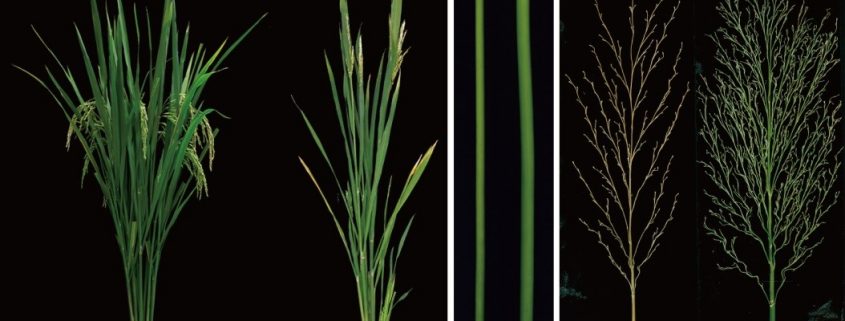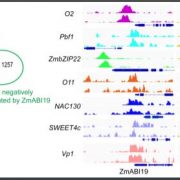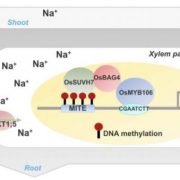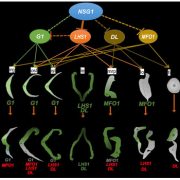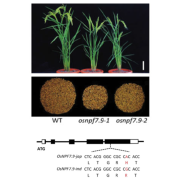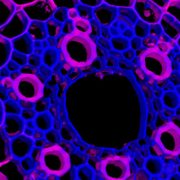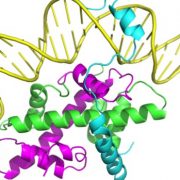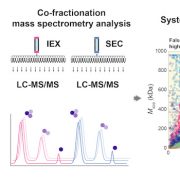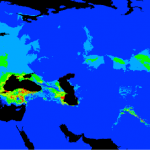OsSHI1 shapes plant architecture in rice
Duan et al. explore the mechanism underlying plant architecture establishment in rice. Plant Cell https://doi.org/10.1105/tpc.19.00023
By Erchao Duan, Nanjing Agricultural University, Nanjing, China.
Background: Rice is a major crop consumed by more than half of the world’s population. The yield of rice is collectively determined by three major agronomic traits: panicle number, grain number per panicle and grain weight. The former two are important determinants of rice plant architecture and mainly attributed to the ability of the plant to produce tillers (vegetative branches) and the number of primary and secondary branches on the fruit-bearing panicle. These traits are regulated by complex transcriptional regulatory networks and influenced by the environmental factors.
Questions: We wanted to understand how plant architecture is established during rice development. We used a genetic approach to identify a rice mutant with altered plant architecture accompanied by a yield penalty, and then looked for the responsible gene.
Findings: We identified a rice mutant named short internode1 (shi1), which has greatly reduced tiller number, enhanced stem strength and increased panicle branch numbers. Molecular cloning revealed that the altered plant architecture in the mutant is caused by deletion of the OsSHI1 gene. OsSHI1 is mainly expressed in the axillary buds and young panicle. We showed that OsSHI1 protein is localized in the nucleus, where it acts as a transcription factor to regulate gene expression, subsequently regulating tillering and panicle branching. Interestingly, we found that OsSHI1 physically interacts with IPA1, a previously identified key regulator of plant architecture in rice, and that OsSHI1 can modulate IPA1’s transcriptional activity on downstream target genes. These findings provide insights into the molecular bases underlying plant architecture establishment and grain yield in rice.
Next steps: OsSHI1 acts as an important transcription factor that regulates multiple aspects of rice development. Therefore, it is important to identify and study its genome-wide target genes and its additional interacting partners to fully understand the biological function of OsSHI1 in regulating rice development in future studies.
Erchao Duan, Yihua Wang, Xiaohui Li, Qibing Lin, Ting Zhang, Yupeng Wang, Chunlei Zhou, Huan Zhang, Ling Jiang, Jiulin Wang, Cailin Lei, Xin Zhang, Xiuping Guo, Haiyang Wang and Jianmin Wan. (2019). OsSHI1 Regulates Plant Architecture Through Modulating the Transcriptional Activity of IPA1 in Rice. Plant Cell. (2019). https://doi.org/10.1105/tpc.19.00023.
Key words: Rice, transcription factor, plant architecture


